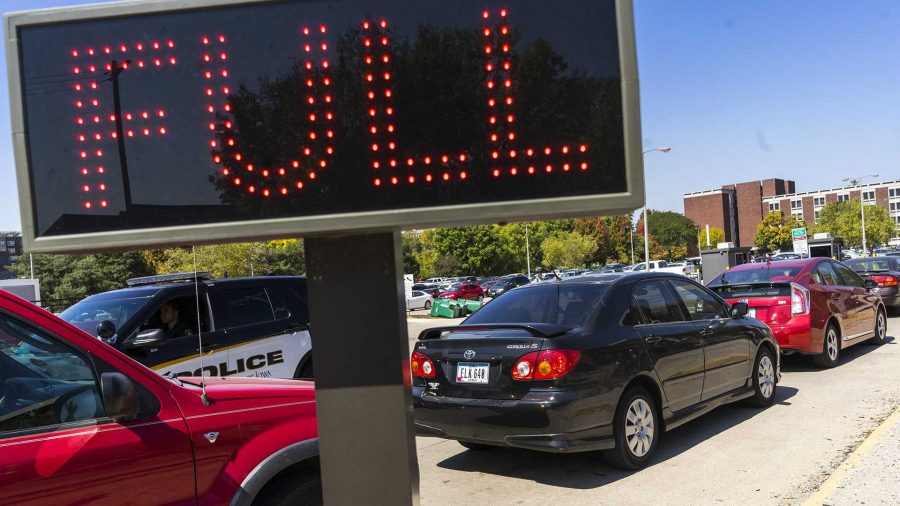The Hawkeye Storage Lot has been in use for 30 years and has greatly expanded, but students are still finding it a hassle to park their cars.
By Julia Shanahan
Bringing a car to college has its obvious positives and negatives: grocery shopping is easy, but everyone suddenly needs a ride.
For freshman Corie Mortenson, home is only an hour and a half away from the UI. She keeps her car in Hawkeye Storage because it makes traveling home easy, but it’s typically a 30-45 minute process before she can gain access to her car.
“I think if you live in Iowa, it’s worth it; if you don’t, it’s not,” she said.
Many undergraduate students feel the same way. For an undergraduate student living in the residence halls, the parking options are limited to either Hawkeye Storage or a Mayflower permit. The cost to park in the Hawkeye Storage is $189 per semester, and the Mayflower permit is $279 per semester. This does not include the $1 per hour fees that students must pay if they choose to leave their vehicle at ramps closer to their residence hall.
Hawkeye Storage is located on the West Side of campus and is only linked by Cambus. Even from the west dorms, the parking lot is still approximately three and a half miles away.
Being that this is such a big university with students from all parts of the country, parking should be made more accessible and convenient.
RELATED: Iowa City parking meters now accept app-based payment
According to communications manager April Wells, there has been a moderate increase in the demand for the parking passes, and UI Parking & Transportation always tries to be mindful of the price. Wells pointed out that the university does provide helpful services like the Zip Car and the U-PASS program. Parking and Transportation has since expanded the amount of parking at Hawkeye Storage, and it is made available specifically for students on campus.
“We don’t have unlimited parking, so we don’t really want to add additional parking unless we really need to,” said Wells.
While there are regular buses running, the schedules can often conflict withthat of students. Especially on Sundays, the buses don’t run until 11 a.m., which can be difficult if students want access to their cars earlier in the morning.
Iowa State University, which has a comparable number of students, allows parking in lots based on the residence hall students live in. This allows the students’ cars to be within walking distance. They can also choose to park by the stadium for a lower fee but are asked to move their cars by midnight before a football game.
The parking around Kinnick is taken up mostly by the surrounding hospital. However, the university could consider a “first come, first served” parking permit to allow students to keep their cars in the ramps closer to their residence halls.
It is understood that the geography of the campus plays a deciding role in where students are able to park. But for the amount of money that students pay per semester to store their cars, the 30-45 minute process should be made much more convenient.



